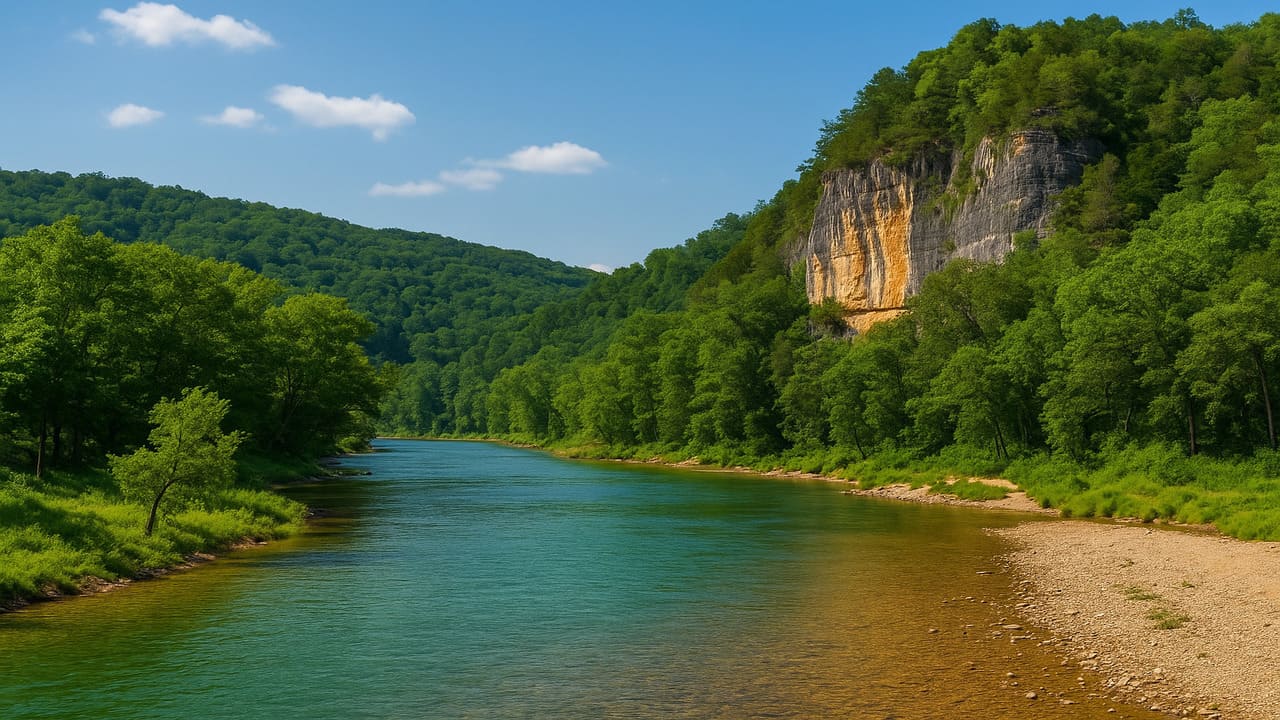
Visit MarkTwain Lake – the Ozark National Scenic Riverways often referred to simply as Ozark National Park is a sanctuary of wild beauty, clear spring-fed rivers, and thick forests that whisper with history. The park is not just a destination for outdoor enthusiasts; it’s a testament to the enduring power of untouched American landscapes.
Established in 1964 as the first national park area to protect a river system, Ozark National Scenic Riverways preserves more than 80,000 acres of land and water along the Current and Jacks Fork Rivers. These rivers are among the clearest in the United States and serve as the lifeblood of a region rich in biodiversity, folklore, and recreation.
At the core of Ozark National Park are its rivers. The Current River, which flows for over 180 miles, begins at Montauk Spring and weaves its way through limestone bluffs, narrow canyons, and shaded valleys. Fed by hundreds of freshwater springs, it maintains a cold, steady flow year-round ideal for canoeing, kayaking, tubing, and fishing.
The Jacks Fork River, a tributary of the Current, offers a more rugged experience with its swift waters and dramatic cliffs. Popular among whitewater paddlers and backcountry campers, this stretch of river remains largely undeveloped, making it a haven for those seeking solitude in nature.
These waterways are more than just scenic backdrops; they support a complex ecosystem that includes otters, herons, smallmouth bass, and endangered species like the Ozark hellbender a large aquatic salamander found only in clean, fast-moving Ozark streams.
Read More : Castlewood State Park: Discover Nature’s Beauty for Your Next Outdoor Retreat
While the rivers steal the spotlight, the rest of the park holds treasures just as remarkable. Ozark National Park boasts over 300 documented caves, including the famous Round Spring Cave and Jam Up Cave, each featuring ancient formations and hidden chambers that have drawn explorers for generations.
The park is also home to several massive freshwater springs. Big Spring, one of the largest in the United States, pumps more than 280 million gallons of water a day and is a must-see attraction. The spring’s vibrant turquoise water, surrounded by mossy stones and towering sycamores, creates a scene straight from a storybook.
For those who prefer land-based adventures, Ozark offers numerous hiking and equestrian trails. Popular routes like the Ozark Trail take hikers through hardwood forests, across river valleys, and up scenic overlooks where bald eagles and wild turkeys are a common sight.
Camping opportunities abound, from riverside spots to developed campgrounds with basic amenities. Whether it’s pitching a tent beneath the stars or spending the night in a historic cabin, visitors have plenty of ways to immerse themselves in the natural rhythms of the Ozarks.
Ozark National Park is more than a natural preserve it is a living museum of regional culture and American history. Long before the area was designated a national park, it was home to indigenous peoples, European settlers, and river communities that lived off the land and water.
Visitors today can still find remnants of 19th-century grist mills, pioneer homesteads, and rustic general stores. The Alley Mill, a red water-powered mill built in 1894, is a beloved landmark that captures the pioneering spirit of the Ozarks. Nearby, interpretive centers and seasonal ranger programs tell stories of the land’s early inhabitants, folk traditions, and environmental significance.
Moreover, the park plays host to events that celebrate Ozark culture, from traditional bluegrass festivals to basket-weaving demonstrations and storytelling sessions around crackling campfires.
Simak Juga : Creative Play: AR & VR Games That Spark Kids’ Imagination
As pressures from development, climate change, and tourism increase across America’s public lands, Ozark National Park stands as a model of balance where ecological preservation, recreation, and cultural heritage can thrive together.
The National Park Service, alongside local communities and conservation groups, continues to monitor water quality, protect endangered species, and improve trail infrastructure. Efforts are also underway to expand educational programs that connect younger generations to the land and its stories.
In an age of overstimulation and digital overload, the Ozark National Park offer something increasingly rare: quiet, authenticity, and connection to the land, the water, and our shared history. Whether you’re paddling downstream through a misty morning, hiking a sun-dappled trail, or listening to an old-timer tell tales of river lore, the experience is transformative.
The Ozarks don’t shout. They whisper. And for those who are willing to listen, they have a great deal to say.